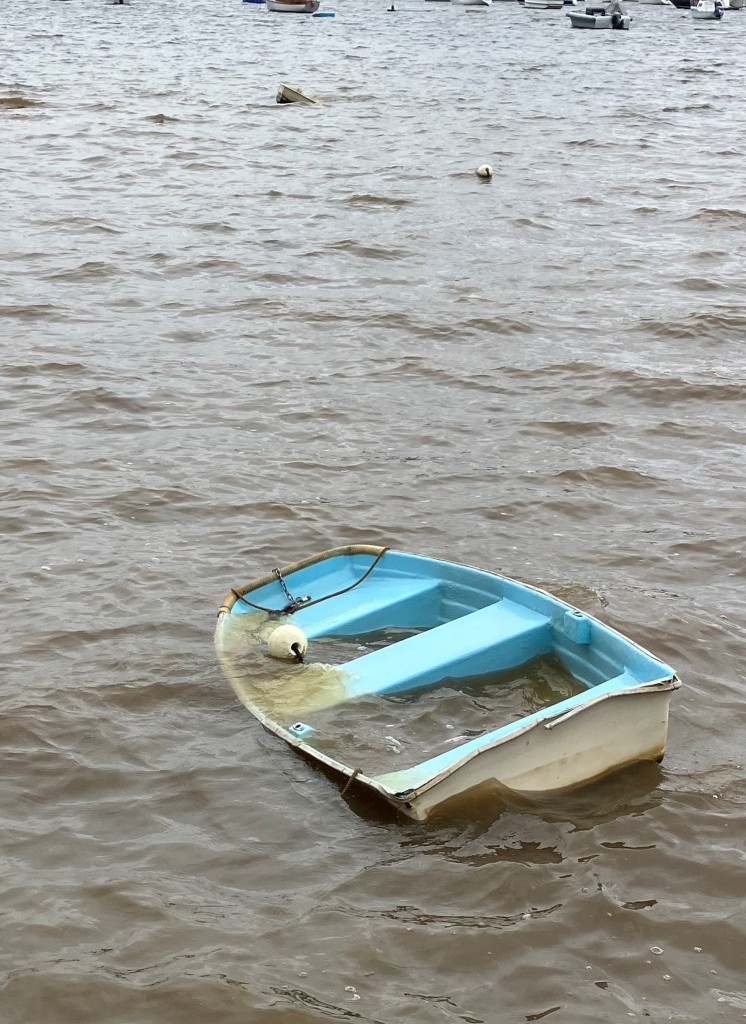
…………come again another day. We want to go outside and play. Come again some other day’.
Well, it did and it did; go away and come again, that is. The previous post six months ago (was it really that long ago?) was about never-ending rain, wind and floods; the TV news tonight is more of the same. In fact, it seems that Sydney will have its wettest year since records began.
Heavy rain was not unusual where Madame and I lived in the Pays Basque region of SW France. No sooner had we bought our maison de maître in 2008 than it rained every day for six weeks. A few years later we were unable to reach our house because of flooding; rain was a fact of life and you accepted that.


While the water dispersed quickly in the Pays Basque the same cannot be said of this part of Australia. A weather expert says that ‘The average temperature in NSW has been increasing since 1910 with extreme weather events such as heavy rainfall and storm surges near the coast. Drains get blocked by leaves and debris. Water volumes temporarily exceed the capacity of local outlets to cope.

Rough weather is not just a 20th century phenomenon, nor confined to NSW. The Great Flood of 1893 occurred in Brisbane, Queensland. Three times the river burst its banks, hence the name Black February.

This dinghy, row boat, whatever you like to call it, is unlikely to be on the surface tomorrow, not drowned by the waves but sunk by the volume of rain inside it.



Pittwater, that picturesque estuary between the Ku-ring-gai Chase National Park and Avalon, has taken a battering. More locally, Brown Bay (one of many of that name) and doubtless christened by a worthy 19th century settler, lives up to its name. Rainwater pours off the hills of Ku-ring-gai Chase bringing with it soil and rocks and changing the colour of the sea.


Pittwater and the Northern Beaches area was formerly known as Guringai country, the land
of the Garigal or Caregal people. There are Aboriginal sites, including middens (refuse dumps), axe- grinding grooves, cave art sites and rock engravings. These illustrate the close relationship that Aboriginal people had with the land. More about that later.

However, there are problems nearer home. Once they start, these potholes are hard to fill when the rain is so unrelenting. Unless you drive a large vehicle they do not improve the suspension. In the rain you can’t even see the holes! According to the press around 10,000 motorists have damaged tyres which they blame on the potholes.

And the connection between a common nursery rhyme and this remarkable painting? It illustrates the conditions under which the Spanish Armada limped home in 1588. The rhyme, supposedly, recalls the defeat of the Armada, from the English point of view of course. Another version of the rhyme is ‘Rain, rain goes away, come again another day. That makes more sense, otherwise it’s hard to make the connection between the rhyme and the battle.

José Gartner de la Peña 1892
Not very reassuring John, though on the climate front nothing is as the moment. Interesting to see that you are still blogging, I will look forward to hearing from you.
LikeLike
Thanks for commenting, but the world seems upside down at the moment as regards weather, and a lot else!
LikeLike
So good to see you back online blogging! Yup rain, floods, fires, melting, droughts and each year it gets more intense. Frozen Planet II has brilliant photography and deeply depressing commentary. We must do better.
LikeLike